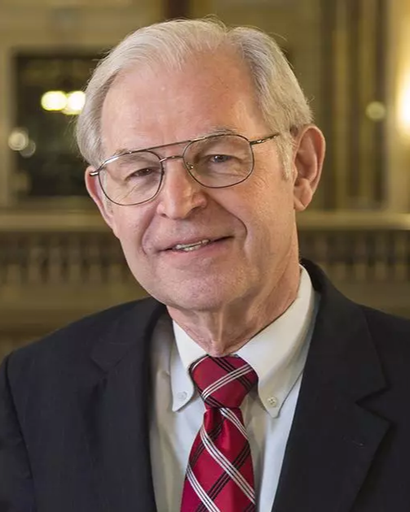Resolving the Tension Between Agriculture and Water Quality in Wisconsin
Wisconsin is known for its invaluable array of water resources on the one hand and its heritage as an agricultural powerhouse on the other. At first glance, it seems that Wisconsin policymakers face a dilemma, because these two aspects of the state’s identity can be in tension with one another. The federal government’s most recent National Water Quality Assessment concluded that agricultural runoff and the like are the leading cause of adverse water quality impacts on rivers and streams, and the third-leading cause of such impacts on lakes. On March 18 (which also happened to be National Agriculture Day) the Marquette Water Law and Policy Initiative, part of the Law School’s broader Lubar Center for Public Policy Research and Civic Education, hosted an event to help illuminate a path forward for agriculture and water to coexist. The speakers at the event generally delivered a hopeful message anticipating improved cooperation among farmers, affected citizens, the conservation community, and state and local governments.
The event’s keynote speaker, Dr. Marin Skidmore of the Department of Agricultural and Consumer Economics at the University of Illinois Urbana-Champaign, presented the findings of her team’s study of the effectiveness of local (county-level) regulations targeted at controlling nonpoint source pollution from Wisconsin dairy farms. As Dr. Skidmore explained, by definition nonpoint source pollution does not emanate from a single point; rather, it typically consists of diffuse runoff across broad landscapes. In the case of agriculture, that runoff may carry with it fertilizer or manure that has been applied to farm fields and deposit those pollutants in surface waters. Agriculture is a major economic and cultural force in the state, she acknowledged, but it also often creates serious water quality problems resulting from the “enormous nutrient [manure] output coming from dairy production.” That can impact recreational activities and even public health, she said.
The pollutant load can cause hypoxia, or “dead zones” in surface waters, and in some Wisconsin communities, can contaminate drinking water supplies with elevated levels of nitrates and bacteria. This has led to substantial community opposition to large-scale “concentrated animal feeding operations” – defined by state law as an animal feeding operation with 1,000 animal units or more – in some parts of the state.
Skidmore and her team set out to find a way to test Wisconsin’s efforts to manage the pollution’s impacts while maintaining an industry so important to the state. Nonpoint source pollution is exceedingly difficult to control. It isn’t well regulated under federal or state laws, including the Clean Water Act, Skidmore said, partly because “we don’t have a reliable way to map and quantify the amount of pollution coming from one single farm.” As a result, policy makers can’t use traditional regulatory tools such as command-and-control regulation, pollution taxes, or a cap-and-trade system.
But there is hope, Skidmore said, because “Wisconsin is innovative.” Its leaders have tried solutions that other states haven’t. Skidmore cited the state’s farmer-led watershed groups, farmland preservation program, and water quality trading program as examples. But the program that most captured the attention of Skidmore and her research team was the state government’s decision to delegate the option to regulate manure management to county governments – a program unheard of in other states. The delegation was intended not as a substitute for state authority, but as a complement or addition to it. Perhaps the counties could serve as “laboratories of democracy” for the state, in the same way that the states have sometimes done for the federal government.
So what happened when counties got involved in writing and enforcing local manure management ordinances? By comparing many different county ordinances – and the resulting water quality benefits (or lack thereof) – Skidmore’s team found that some aspects of the ordinances had a measurable impact on water quality, while others did not. The most significant positive impact on water quality resulted from adding a requirement that farmers prepare a “nutrient management plan.” That effectively means a plan for the rate, timing, and method of nutrient application to farm fields. If farmers fine-tune those variables, they can dramatically reduce pollutant runoff to surface waters, Skidmore said, because a lot of the problem comes from nutrient overapplication above what the crop needs. That leaves the excess nutrients vulnerable to precipitation-induced runoff.
Developing a nutrient management plan can be a “light bulb moment” for some farmers, Skidmore found. It can significantly adjust their behavior in the near term and even save them money by decreasing the amounts of fertilizer applied to the fields. And because the state has offered some funding to incentivize the development of the plans, the process can be a win-win for farmers and the environment
Following Skidmore’s presentation, a panel of Wisconsin experts offered their own perspectives on the interface between agriculture and water quality.
Brian Weigel, the Deputy Administrator for the Division of External Services at the Wisconsin Department of Natural Resources, noted that state governments have sometimes been caught in the middle of struggles between farmers, affected citizens, and environmentalists. “There are myriad opportunities for change,” he said, but that won’t happen until the various factions move forward together. DNR is trying to do its part, he said, by developing an office of agriculture and water quality with two goals: trying to communicate effectively with stakeholders, and connecting with governmental partners in neighboring agricultural states to explore best practices for science and policy. But government won’t have sufficient resources to do it alone, he predicted; society and culture need to change, with consumers demanding more sustainably-produced food, to really drive reforms.
“Farmers are the original environmentalists,” because they see firsthand the impacts of pollution on nearby drinking water sources, said Jason Mugnaini, Executive Director of Government Relations at the Wisconsin Farm Bureau. Mugnaini predicted that the farm community in the state will soon enter a time of transition, with farmers open to new conservation practices in part because of government-funded incentive programs. He conceded, though, that some farmers are afraid to seek compliance assistance because of concerns over enforcement actions that might result.
Sara Walling, the Water and Agriculture Program Director at Clean Wisconsin, an environmental advocacy group that has often squared off in litigation with agricultural interests over water quality concerns, emphasized the need for a collaborative approach that includes both famers and affected citizens. “We recognize that there are a lot of farmers out there who are very interested in doing what they can to change the impacts they are having on water quality,” she said. Part of Clean Wisconsin’s role is helping to bridge some of the gaps in understanding the impacts of agriculture on water quality, Walling stated.
Cheryl Heilman, the DNR’s Chief Legal Counsel, reiterated that the agency’s focus is on protecting water quality. Existing laws aren’t enough to solve the problem, and even regulation at the county level has sometimes created a “patchwork” of requirements, with some very effective and others not. Like the other panelists, she emphasized the need for more mutual support among the factions. What can best drive such cooperation? “I think we should have more forums like this,” she said.
Vide of the full program is available here.



